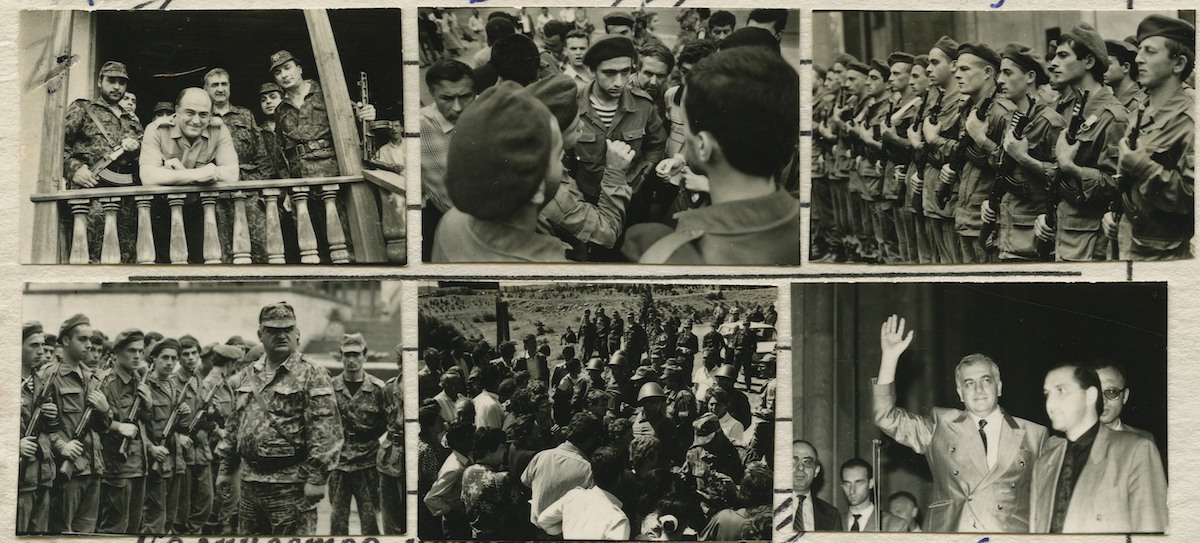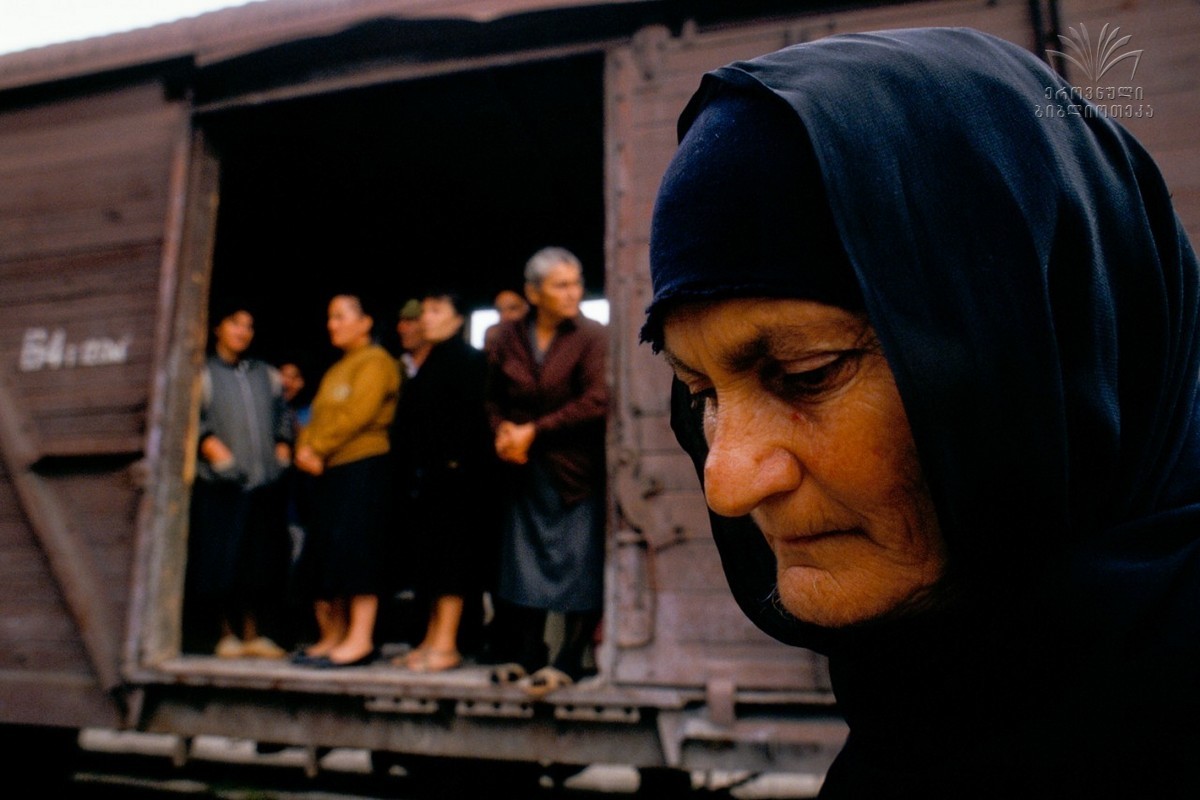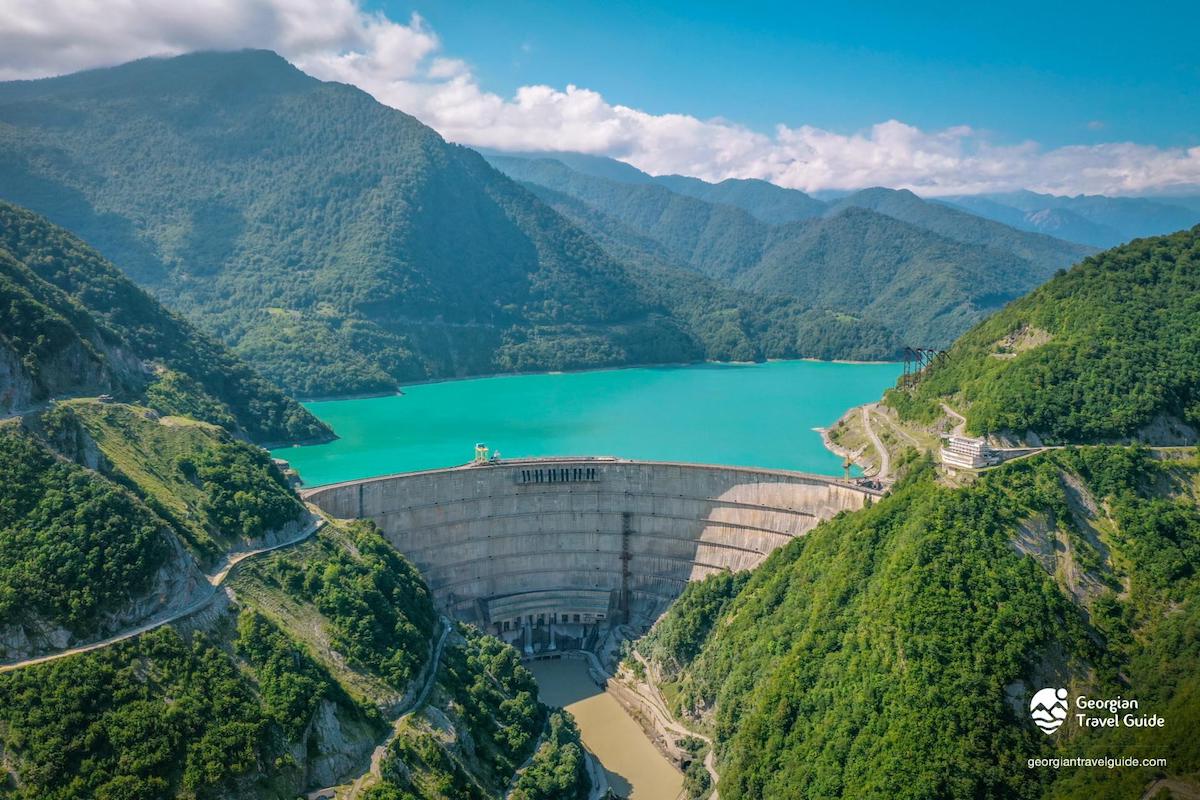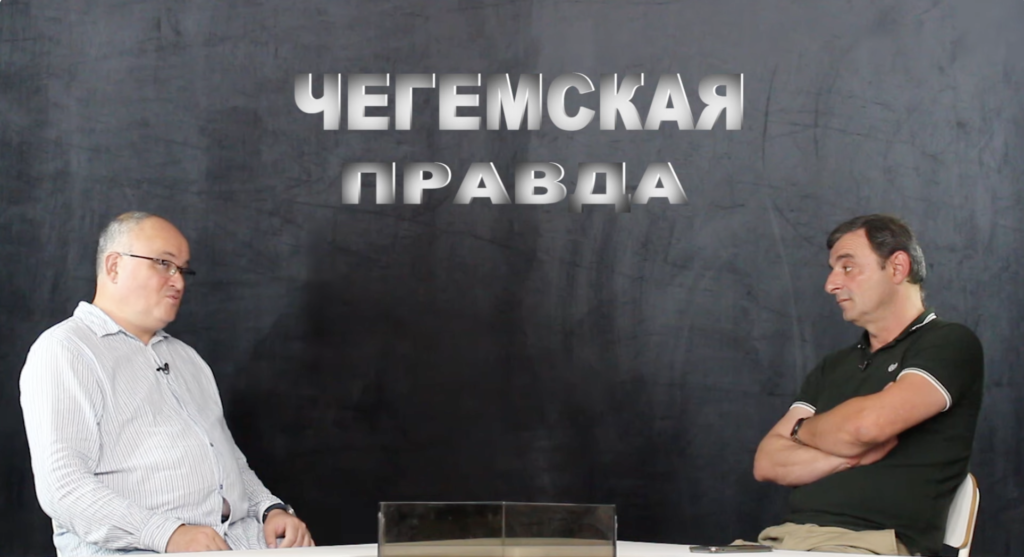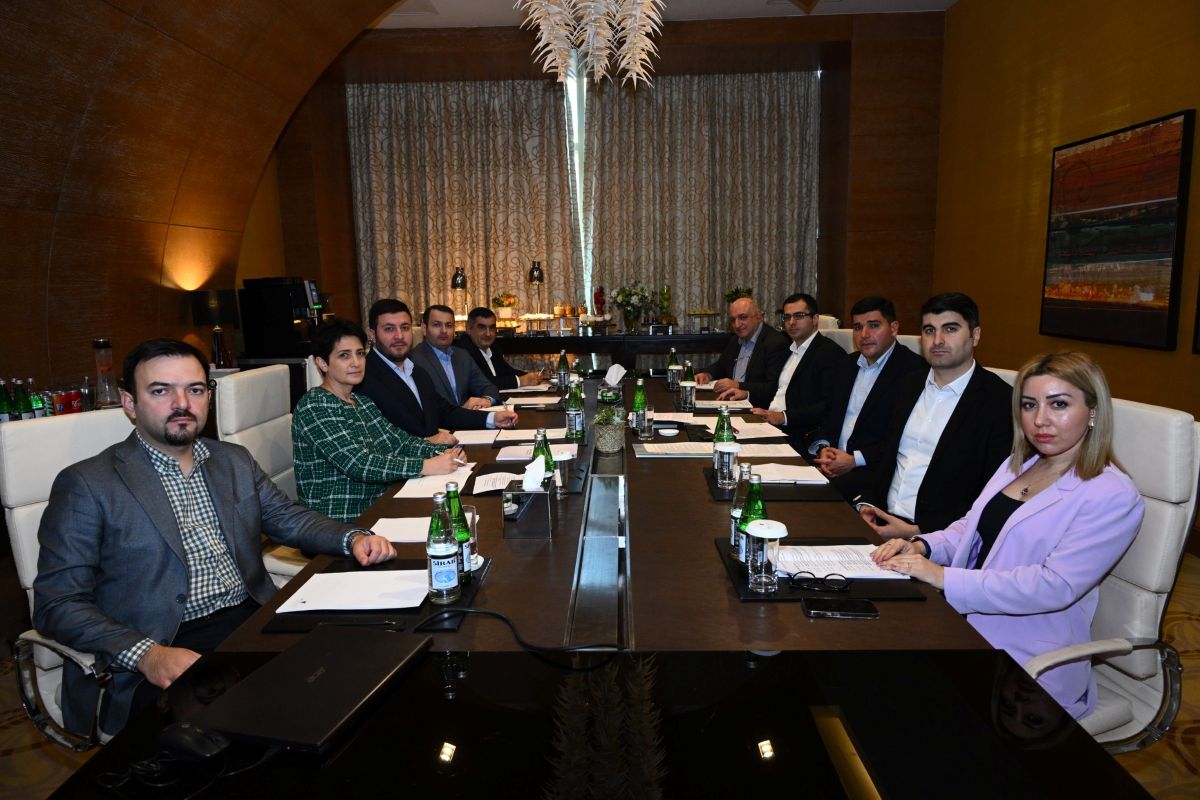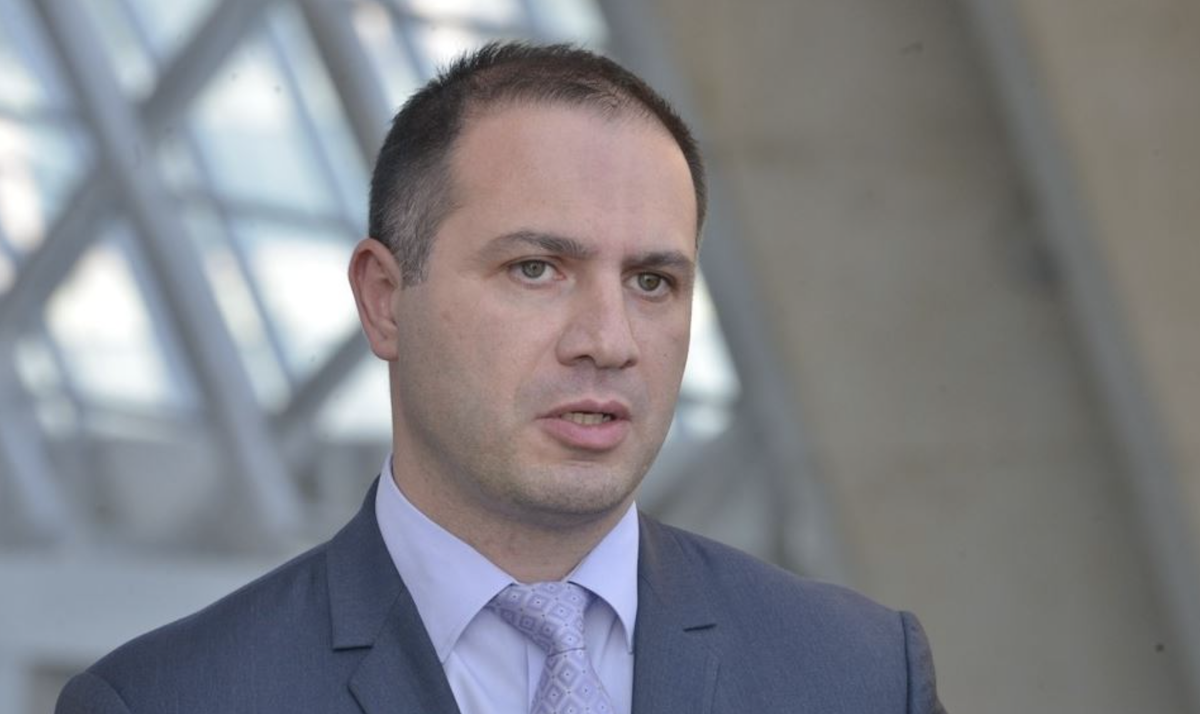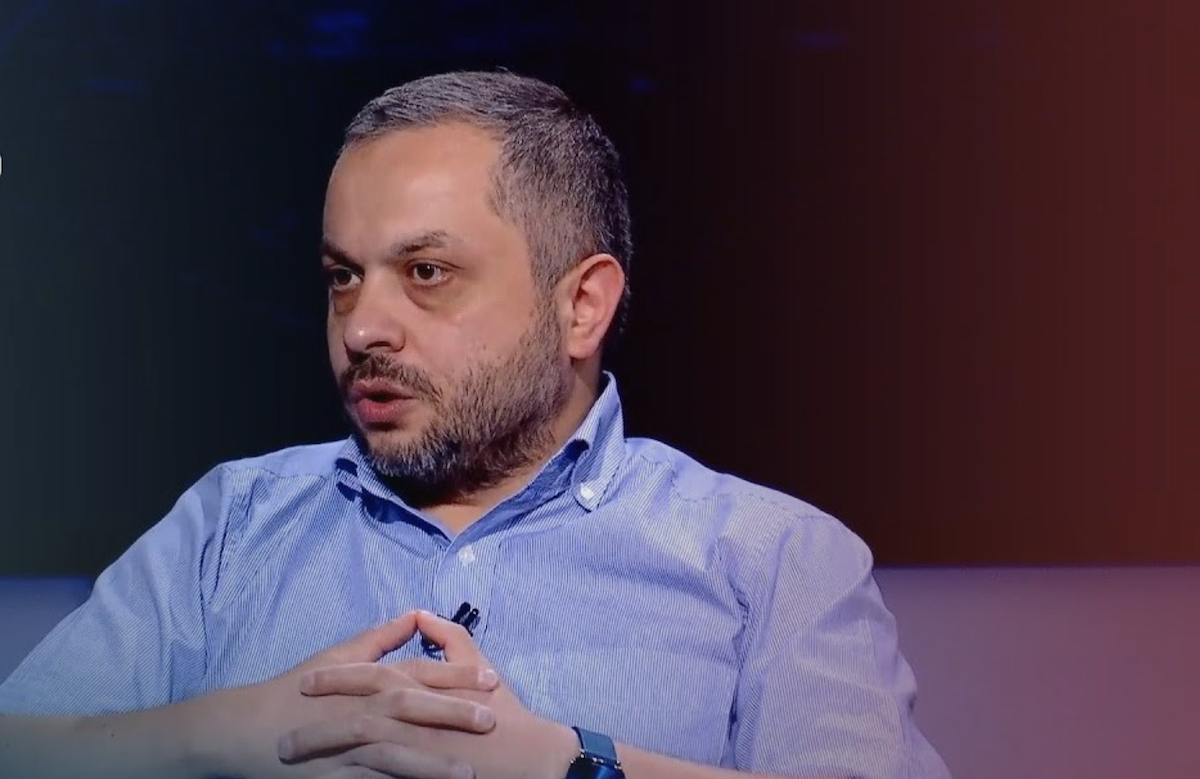How the war in Abkhazia began in 1992
Why Did the War in Abkhazia Happen?
Author: Gabriel Chubinidze
This article was prepared by the Georgian Center for Social Justice. We are republishing it because the subjects discussed remain relevant today. First published on August 18, 2023.
On December 21, 1991, a civil war began in Georgia. It unfolded in two stages — the war in Tbilisi and the war in western Georgia.
In Tbilisi, the war, or the military coup as it is called, had a rather strange nature; the front consisted of only a few streets, while the rest of the city went about its normal life.
The population observed the confrontation between the two armed groups from a distance — some from the Avlabari metro station, which offered a beautiful view of Rustaveli Avenue, and others, the more daring, from Pushkin Square and the area around the Rustaveli metro station.
The metro operated normally, though running non-stop from Rustaveli to Avlabari, bypassing the Freedom Square station (which was then Lenin Square).
Almost 30 years have passed since the war, but many questions are still unresolved.
For example, the war in western Georgia remains unexplored. Not only the course of the war, but also its consequences and damage, are unknown to the public, as if they did not affect people, politics, and everyday life.
In fact, the civil war completely destroyed the already weak, newly formed Georgian state, and the chaos and crisis in Tbilisi unleashed separatist movements operating on the periphery.
? The civil war in Georgia had a direct impact on the onset of hostilities in Abkhazia.
Moreover, it had a direct influence on how the war in Abkhazia was carried out. Often the civil war is linked to the fall of Sukhumi and its consequences, such as the expulsion of 300,000 Georgians from Abkhazia, the loss of control over the territory of Abkhazia, and a devastated economy.
In the first half of 1992, Georgia’s economy experienced a complete collapse
Soviet statistics: “Out of 29 sectors, 26 saw a decrease in production volume. The Ministry of Industry enterprises reduced production by 17 billion rubles, or 52.7 percent, and the Ministry of Food and Processing Industry cut production by 60 billion rubles, or 48.4 percent.”
? Overall, in early 1992, production in Georgia decreased by 47.2 percent compared to the previous year.
Under these conditions, it was clear that the state budget could not be replenished. For example, that year the state lost 5.2 billion rubles from trade, which was 73 percent of total volume.
Inflation also skyrocketed,
? and retail prices increased by 664 percent.
Increase in crime in this period
Alongside socio-economic and political upheavals, law enforcement agencies were completely dismantled, and crime rates surged.
General Prosecutor Vakhtang Razmadze, in a report to the Presidium of the Council with Eduard Shevardnadze at the head in May 1992, stated that law enforcement agencies showed complete inertia in combating crime, with most cases remaining unsolved.
For example, 88 percent of state property thefts, 78 percent of private property thefts, and 72 percent of robberies went unsolved.
Razmadze noted that the prison system was entirely destroyed. For instance, in January alone, about 700 prisoners escaped from detention centers in Kutaisi and Dranda (in Abkhazia).
The government that came to power after the military coup, initially known as the military government and then as the State Council, lost control over the periphery, limiting its effective control to only eastern Georgia.
In South Ossetia war was underway, and regions were falling out of control
The situation was as follows:
The civil war in western Georgia resembled more of a punitive operation. In South Ossetia, a war was already underway, and Tskhinvali was completely beyond Tbilisi’s jurisdiction.
In Abkhazia the Ardzinba government, through legislative changes, was gradually withdrawing from Georgia, and Tbilisi could not effectively counter this.
Like other regions, Adjara fell out of effective central control, though Adjara’s leader, Aslan Abashidze, remained within the Georgian political space.
In Javakheti, with the support of local governors, the population was armed and did not submit to the authorities. For example, when the Catholicos-Patriarch Ilia II arrived in Ninotsminda, a protest was declared, after which local groups attacked defense ministry officials.
State borders and property were uncontrollable, and Soviet army weapons (which could have become property of the Georgian army) leaked out of Georgia and were sold.
? Only from the military base in Akhaltsikhe was weaponry worth 50 million rubles sold to Armenia for the Karabakh war.
Chaos
Georgia lacked a strong central authority, resulting in it being divided into zones of influence. The country was in a state of chaos.
This situation resembled a state of lawlessness, but it did not make people free. On the contrary, it rendered people utterly powerless and vulnerable.
Against this backdrop, grand nationalist goals, once popular in Georgia, became increasingly vague and existed only in a distant future.
Society awaited a messiah who would restore the rule of law and put an end to the chaos.
The return of Shevardnadze
When Eduard Shevardnadze returned to Tbilisi in March 1992, he was met at the airport by the entire Georgian intelligentsia. Soon, political discourse became more active, and discussions began about economic reforms, foreign policy, state structure, and more.
Shevardnadze’s first official address contained three political messages:
- The need for national unity;
- Hope for support from Western countries, with Shevardnadze as guarantor;
- The necessity of political stabilization.
In his speeches, Shevardnadze also talked about ending the civil war.
According to internal surveys conducted by the Center for Analysis and Forecasting of the State Council in April 1992, 67 percent of the population considered the situation in the country tense (this number increased to 85 percent by July).
Only 41 percent of the population in Tbilisi and Kutaisi hoped for political stabilization, while in Senaki and Martvili, which were directly in the epicenter of the civil war, only 18-23 percent did.
Eduard Shevardnadze did not have much support in western Georgia, including Abkhazia, where the majority were supporters of Zviad Gamsakhurdia. For example, in Senaki, only 18 percent of the population decided to participate in the elections in October 1992, whereas in Tbilisi, this figure reached 61 percent.
Shevardnadze needed legitimacy through election
The October election was of great importance to the State Council and personally to Shevardnadze, as he was not an elected leader. He needed political legitimacy, which could only be achieved through elections.
In a letter sent to American diplomats, Shevardnadze expressed concern that Kitovani [Minister of Defense in 1992-93] might disrupt the upcoming elections.
The letter, sent to the U.S. Embassy, describes a meeting between Jaba Ioseliani [a political figure and criminal authority, founder of the paramilitary group “Mkhidioni” – JAMnews] and the Acting U.S. Chargé d’Affaires in Tbilisi.
At this meeting, Ioseliani tried to gauge the possibility of canceling the election and assessing the American reaction.
The October election would not only give international legitimacy to Eduard Shevardnadze, but also put him in a much more advantageous position compared to the informal leaders of the country, such as Jaba Ioseliani and Tengiz Kitovani.
Winter and Spring 1992 were extremely hard for western Georgia and the entire country
The National Guard, “Mkhedrioni,” and police squads effectively conducted punitive operations in Samegrelo. Looting, violence, and robbery became everyday realities in the region.
In February, in the center of Zugdidi, an armed group sent by the State Council randomly shot architect Gochi Djikia in front of his mother.
Intense battles erupted in March. The situation was complicated by rumors that Chechens were fighting among Gamsakhurdia’s supporters.
The involvement of “outsiders” in the Georgian internal conflict further intensified aggression between the opponents.
On March 15, a fierce battle took place in the village of Rukhi, during which both sides used armored vehicles. Gia Karkarashvili and his fighters [in 1993, Karkarashvili became Minister of Defense – JAMnews] were captured.
Later, Gamsakhurdia’s supporters organized a meeting between Karkarashvili, one of the main participants in the events in Samegrelo, and the mother of Gochi Djikia.
In May 1992, hostilities resumed in South Ossetia
On May 20, an unidentified Georgian armed group near the village of Zari destroyed a bus full of civilians. This incident became known as the Zari Tragedy, resulting in 33 deaths.
Shortly after this, urgent efforts began to end the war with the Dagomys Agreement, which called for the introduction of Russian troops to South Ossetia and their assistance in resolving the conflict.
This step was highly unpopular, as Georgian society and political circles viewed the Russian army as a colonial force.
On the other hand, to prevent economic and social collapse in the country, it was necessary to end the conflicts.
A deceptive calm in Abkhazia
The civil war did not spread beyond the Inguri River, and state institutions, though with varying degrees of success, continued to function.
But the region faced a severe economic and humanitarian crisis.
A Russian journalist described Abkhazia in May 1992 thus:
“Many are demanding bread, but it’s uncertain whether it will even be delivered. Homes lack heating, water, and often electricity. The market is almost empty; it is rare to buy a kilogram of potatoes for less than 20 rubles. There is a curfew from 11 PM to 6 AM — that’s what I observed.
And there are checkpoints from the border with Krasnodar to western Georgia. The police and internal troops with automatic rifles are present even in Sukhumi itself.”
Against the backdrop of the political crisis and civil war in Georgia, events in Abkhazia remained outside Tbilisi’s attention. This led to two consequences:
- On the one hand, it was not possible to organize a coordinated and planned resistance to Ardzinba’s radical wing from the center and local Georgian political groups.
- On the other hand, the leader of the State Council, Eduard Shevardnadze, did not attempt to establish a businesslike dialogue with Ardzinba. Before the war, he had never met him personally.
The separatist movement of Ardzinba exploited the civil war for its interests
They allowed Gamsakhurdia’s supporters to cross the Inguri River without obstruction and use the territories of Gali and Ochamchire as refuge.
The chaos enabled Ardzinba to enact a series of political acts aimed at separating from Georgia.
At various times, laws incompatible with the Georgian constitution were passed, including those that created parallel state structures.
For example, during this period, Ardzinba established the so-called Abkhazian Guard, formed on an ethnically homogeneous basis, which became the main armed formation during the war in Abkhazia.
For Abkhazia, as well as for Georgia as a whole, the next two to three months were crucial.
? Events from June to August 1992 determined the fate of Georgian and Abkhazian society in the coming decades.
Terrorist attack against Ioseliani and attempted coup
On June 13, 1992, a terrorist act was carried out against Jaba Ioseliani on Chikovani Street in Tbilisi, using a remote-controlled device. Ioseliani survived, but civilians nearby, including a child, were killed.
A few days after the incident, on June 24, the civil war in Tbilisi resumed. Gamsakhurdia’s supporters seized the television tower and the television building, using 250 soldiers and armored vehicles.
A radio statement was soon broadcast, announcing a mass popular uprising aimed at overthrowing the State Council’s government.
They intended to change the government before the signing of the so-called Dagomys Agreement, which is why the operation was rushed and poorly organized.
By the end of the day, after bloody battles, the entire group was captured.
The State Council (Shevardnadze) used this incident to their advantage and effectively informed the world of the “terrorist nature” of Gamsakhurdia’s supporters.
Even Zviad Gamsakhurdia condemned the act, and the orchestrator of the operation, Walter Shurgaya, was effectively declared a traitor.
Intelligence had prior knowledge of the upcoming military confrontation. They were aware of the approximate number of participants and the epicenter of the events — the television building.
Despite this, no measures were taken.
250 soldiers, tanks, and other armored vehicles traveled along Kakheti Highway, the Mtkvari River embankment, and Heroes’ Square without being noticed.
? In fact, the State Council had completely lost control of the situation and could not control not only the country, but even a few streets.
It was clear that the only force representing an existential threat to the State Council was not Ardzinba’s government or South Ossetian separatism, but Gamsakhurdia’s supporters.
In the chaos, they were the only force that did not recognize its legitimacy.
Attack on Georgian Minister of Internal Affairs Givi Lominedze in Abkhazia
On June 24, alongside the events in Tbilisi, a significant event occurred in Sukhumi. The Abkhazian Guard attacked the Ministry of Internal Affairs of Abkhazia and forcibly removed Minister Givi Lominedze from office.
After this, the security forces were effectively in the hands of the separatists.
This fact was overshadowed by the events in Tbilisi, and a reaction only followed several days later, which proved to be too late.
Exactly one month later, on July 24, Vladislav Ardzinba restored the 1925 Constitution of Abkhazia, which meant its separation from the rest of Georgia.
There was no reaction from Tbilisi except that the parliament declared the act illegal and annulled it.
UN Membership and the legitimization of Eduard Shevardnadze
On July 31, 1992, Georgia was admitted to the United Nations. In a solemn speech, Shevardnadze declared:
“Western powers turned away from Georgia twice in two and a half centuries — did not recognize us, did not protect us. This was a historical injustice, which both times led to national tragedy. And now Georgia has been recognized by the world community, acquiring all rights and obligations under international law, thus becoming a full-fledged state — the national tragedy has ended.”
For Shevardnadze, this recognition meant not only acknowledgment of Georgia as an independent state, for he viewed UN membership as an indirect international recognition of the legitimacy of his government, placing him in a much more advantageous position compared to Zviad Gamsakhurdia.
Release of Gamsakhurdia’s supporters
The recognition of Georgia by the UN was accompanied by the declaration of July 31 as National Reconciliation Day, emphasizing civil and inter-ethnic reconciliation. On this occasion, supporters of Gamsakhurdia, including those involved in the June 24 events, were released.
It was also decided to integrate the paramilitary groups into the Ministry of Defense and return them to military bases.
This act was largely aimed at external observers. Archive material analysis shows that Tbilisi paid significant attention to international coverage and reaction to this event.
Apparently, Tbilisi sought to demonstrate that the State Council was making every possible effort to establish stability and peace in Georgia.
Distribution of Soviet military arsenal
In May 1992, as a result of the Tashkent Agreement, it was decided to distribute the Soviet military arsenal among the former Soviet republics on a quota basis.
For Georgia, the transfer of the 10th Division stationed in Akhaltsikhe was planned, and Georgia’s request, this process was expedited due to active looting and selling of the division’s assets.
On August 3, 1992, Georgia received equipment from the Akhaltsikhe base on an expedited basis: a total of 107 tanks and 164 units of various armored vehicles. Most of the tanks were in storage, had exhausted their combat resources, and needed major repairs.
Despite this, the armed forces of the State Council became unequivocally the most powerful in the country. Neither Abkhaz forces nor Gamsakhurdia’s supporters had an adequate response to this.
Gamsakhurdia’s supporters take hostages
On August 11, Gamsakhurdia’s supporters in Zugdidi captured twelve people from a group sent to rescue the kidnapped Minister of Internal Affairs Sandro Kavsadze. The kidnappers demanded a ransom of 10 million rubles and transported the hostages to Gali in Abkhazia.
According to data from January to June 1992, all sectors of the Georgian economy were on the brink of collapse. This was compounded by transportation issues, with a significant reduction in cargo turnover observed almost everywhere.
For example, the railway transported three times fewer goods in January-June compared to the previous year, totaling 3,546.9 tons.
The situation worsened in July, and by August the railway was completely paralyzed.
Decision to deploy troops in Abkhazia
Armed Gamsakhurdia supporters in western Georgia were stopping and robbing trains. The problem even escalated to the international level.
War-torn Armenia, whose economy heavily depended on the railway, protested the situation, since it received most of its cargo from Russia via this railway.
? On August 11, 1992, the Security Council decided to deploy troops to Abkhazia.
The verbatim report of this meeting is now classified and not available for review. However, it can be said that the primary reason for deploying troops to Abkhazia was to end the civil war in western Georgia. The deployment was intended to increase pressure on the Abkhaz separatists and force Ardzinba to abandon secession.
On the night of August 11, Shevardnadze addressed the public on television about events in Samegrelo:
“Today, I have agreed with my friends, I remain in the ranks to fight against evil, to fight using force. Georgia is now strong — stronger than it was 10-15 days ago [thanks to armaments from the Tashkent Agreement]; now it has a sufficiently large army and enough weapons. All means are available to eradicate evil and establish order on Georgian soil forever […]
It’s not about any one region, it’s about the entire territory of Georgia—from Leselidze [a village in Abkhazia] to the Kazbegi district and other borders, to ensure order everywhere and in everything. The army, militia, and military equipment will be used for this […]
We call on our people to take to the streets, to the squares tomorrow, and support us so that we can strike against our opponents.”
Invective against Gamsakhurdia’s supporters, Abkhaz people not mentioned
The next day in Tbilisi a rally was held on Heroes Square, organized by the State Council. Representatives from the intelligentsia and political elite, including Eduard Shevardnadze, spoke at the event.
Everyone demanded severe punishment for Gamsakhurdia’s supporters who were deemed guilty.
On the same day, a statement from the Catholicos-Patriarch of Georgia, Ilia II, was issued in support of the State Council’s decision:
“In Samegrelo, destructive forces from various regions of Georgia and representatives of other peoples [referring to the rumored involvement of Chechens in Samegrelo] have gathered, tainting this land with their dishonorable actions.”
The State began preparing public opinion for the upcoming military operation.
? The entire discourse was directed against Gamsakhurdia’s supporters, and the Abkhaz were not mentioned at all.
Abkhazians warned about deployment of police and troops
The official reason given for deploying troops to Abkhazia was the protection of the railway’s security.
Negotiations with the Abkhaz side on this matter began several weeks prior, and an agreement was reached that the Georgian army, along with the Abkhaz Guard, would protect a section of the railway.
On August 10, 1992, a presidential decree introduced emergency measures on the Georgian railway. The Abkhaz side was also informed that part of the troops (specifically, police units) would enter Abkhazia to free the hostages.
Jaba Ioseliani recalls in his book Three Dimensions:
“Our main task was to ensure the safe movement of trains and to end the outrages of the Gamsakhurdia supporters. Of course, this itself put pressure on the Abkhaz separatists, who were fueling our internal conflicts by secretly supporting the Gamsakhurdia supporters. But we did not want war.”
The State Council did not aim to start a prolonged war. With new significant weaponry (which no other side in Georgia had at the time) they expected a swift victory, primarily over Gamsakhurdia’s supporters.
?Entering Abkhazia was aimed at encircling Gamsakhurdia’s supporters, which would automatically mean the protection of the railway.
Such a display of military force was intended to compel the Abkhaz separatists to cease secession. This step was meant to restore jurisdiction over the entire country and establish order.
On August 14, armed groups of the State Council crossed the Inguri Bridge, marking the beginning of the war in Abkhazia.
? It remains unclear what happened between August 14 and 18, why the Abkhaz opened fire, how Tengiz Kitovani’s Guard ended up in Sukhumi, and why the war started.
The answers to these questions are likely hidden in the verbatim report of the Security Council from August 11-12, which is now inaccessible.
Regardless, it is clear that the war in Abkhazia was a continuation of the civil war that had begun in Tbilisi and then spread to Western Georgia. Moreover, the word “Abkhaz” did not appear at all in state propaganda and was only mentioned several days after the troops entered Abkhazia.
Lack of vision regarding ethnic diversity in Georgia
The Georgian-Abkhaz conflict has existed for nearly a century and has many dimensions.
During the existence of the Soviet Union, and hence strong central authority, the conflict remained at the level of political elites and was barely noticeable to ordinary citizens.
However, the weakening of central authority at the end of the 1980s brought the conflict to a social level, leading to the first bloody clashes in 1989.
In parallel, the newly formed Georgian national movement had almost no political vision regarding other peoples and ethnic minorities living in Georgia.
? Moreover, in some cases, leaders did not even acknowledge the rights of other ethnic groups.
This heightened the fears of the Abkhaz (as well as the Ossetians) regarding an independent Georgia, as they found themselves in a political space with the more numerous Georgians.
The collapse of the Soviet Union and the ensuing political chaos in Georgia turned the ethnic conflict into an armed confrontation that ended in tragedy for both peoples.
On August 14, 1992, Georgia was drawn into a war that it could not win.
The prosecution holds materials from investigations that examined the reasons for the defeats first in Gagra, then in Sukhumi, and ultimately throughout Abkhazia.
In several instances, the investigation considered all versions, including the version of treason.
Many aspects of the war remain unclear, but regardless of how events unfolded, even 30–31 years after the war, no one has been held accountable.
Georgia still cites the protection of railway security as the reason for its invasion of Abkhazia, although it is clear to everyone that this was merely a formal reason.
The real motivation remains undisclosed and raises numerous questions to which there are still no clear, research-based answers.
The article was prepared as part of the project “Supporting Equality, Solidarity, and Social Peace in Georgia,” undertaken by the Center for Social Justice with the support of the Swiss Embassy in Georgia.
The content of this article does not necessarily reflect the position of the Swiss Embassy. Responsibility lies solely with the Center for Social Justice.










